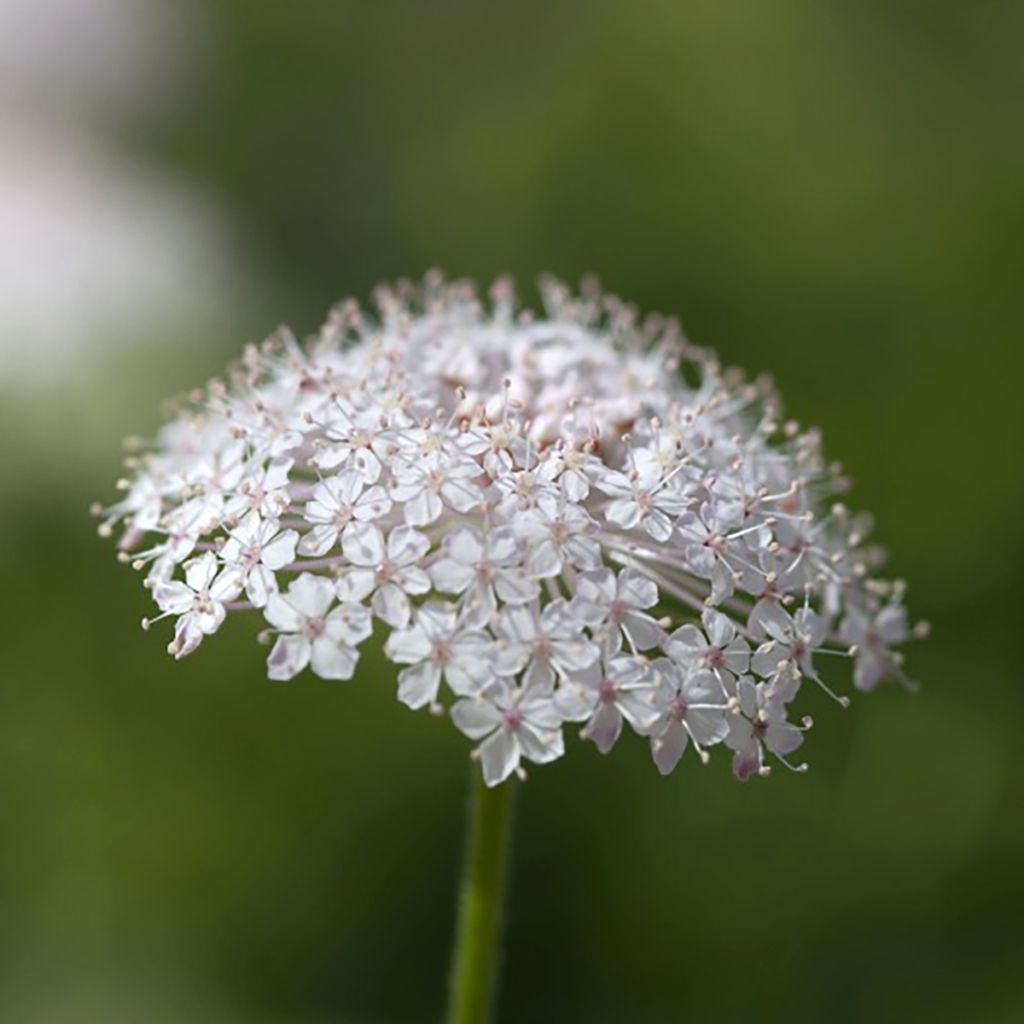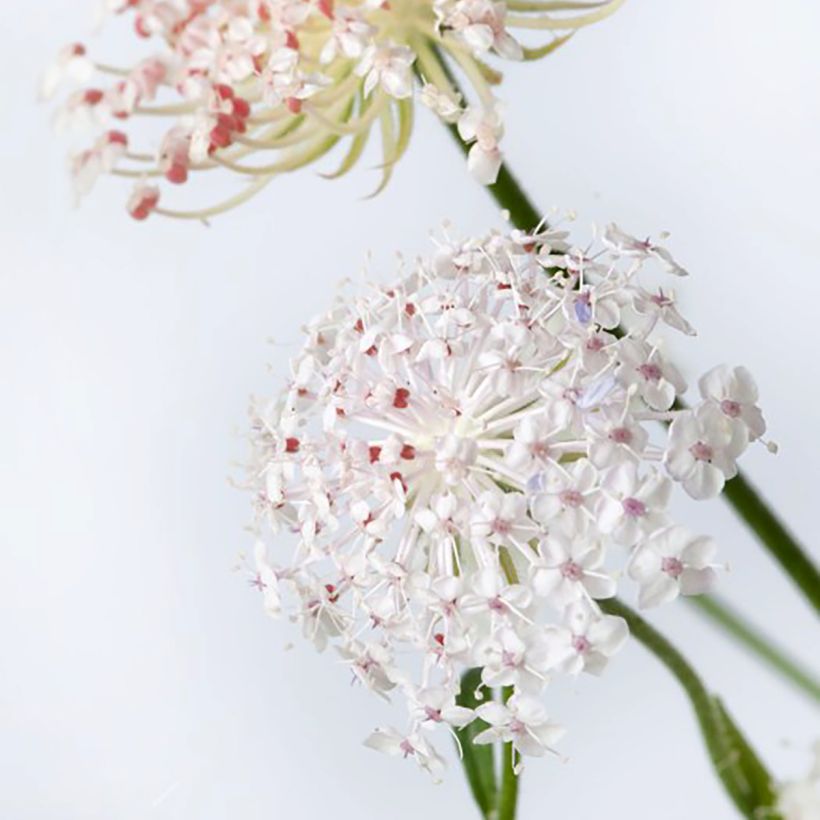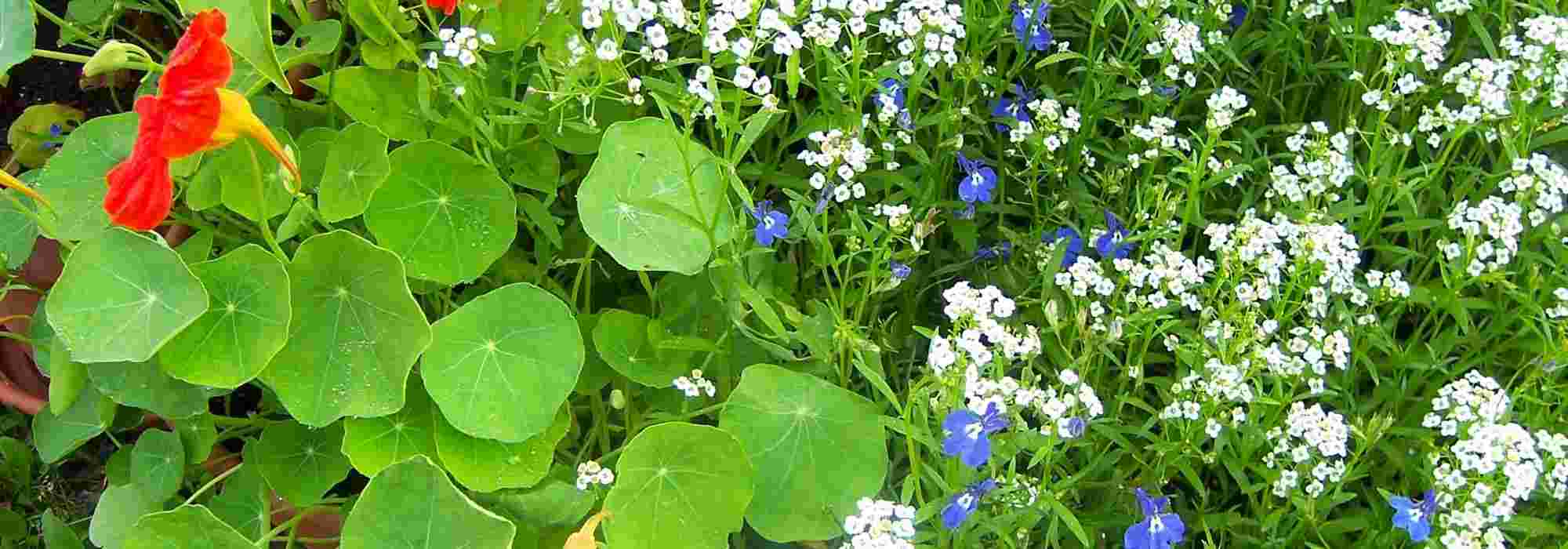Didiscus caeruleus 'Lace Pink', also known as Blue Lace Flower 'Lace Pink', is an annual plant prized for its graceful habit and delicate flowering, cherished by gardeners who favour poetic and natural scenes. Its slender, branching stems bear umbels of small, pastel pink flowers with a light, sweet fragrance, evoking the floral lace of romantic gardens. Grown in full sun or partial shade, it thrives in fertile, well-drained and consistently moist soil, but dislikes frost. Suitable for containers or borders, it illuminates edges, mixed borders or cottage gardens and flourishes in summer beds. It is loved by bees and butterflies.


Trachymene coerulea Lace Pink seeds


Trachymene coerulea Lace Pink seeds
Share your pictures?
Hide split images
New arrival
Trachymene coerulea Lace Pink seeds
Trachymene coerulea Lace Pink
Lace flower
Be the first to leave a review
Special offer!
Receive a €20 voucher for any order over €90 (excluding delivery costs, credit notes, and plastic-free options)!
1- Add your favorite plants to your cart.
2- Once you have reached €90, confirm your order (you can even choose the delivery date!).
3- As soon as your order is shipped, you will receive an email containing your voucher code, valid for 3 months (90 days).
Your voucher is unique and can only be used once, for any order with a minimum value of €20, excluding delivery costs.
Can be combined with other current offers, non-divisible and non-refundable.
Home or relay delivery (depending on size and destination)
Schedule delivery date,
and select date in basket
This plant carries a 6 months recovery warranty
More information
We guarantee the quality of our plants for a full growing cycle, and will replace at our expense any plant that fails to recover under normal climatic and planting conditions.
An annual with captivating, delicate umbels of pale pink flowers with a subtle fragrance. This light and airy plant is ideal for flowerbeds, borders, and container growing. It thrives in sunny to partially shaded positions and flourishes in rich, well-drained soil kept moist. Its summer flowering, occurring approximately 110 to 120 days after sowing, makes it a popular choice for fresh bouquets and cottage-style gardens. Sow in May, directly in position.
Flower size
5 cm
Height at maturity
60 cm
Exposure
Sun, Partial shade
Germination time (days)
17 days
Sowing method
Direct sowing
Does this plant fit my garden?
Set up your Plantfit profile →
Sowing period
March to May
JAN
J
FEB
F
MAR
M
APR
A
MAY
M
JUN
J
JUL
J
AUG
A
SEP
S
OCT
O
NOV
N
DEC
D
Flowering time
June to September
JAN
J
FEB
F
MAR
M
APR
A
MAY
M
JUN
J
JUL
J
AUG
A
SEP
S
OCT
O
NOV
N
DEC
D
Description
Didiscus caeruleus 'Lace Pink' is a horticultural selection of an annual herbaceous plant from the Araliaceae family, related to ivy. The species is native to southwestern Australia, Malaysia, New Caledonia and Fiji. The 'Lace Pink' variety impresses with the delicacy of its inflorescences, which follow one another from June-July until September. Each inflorescence measures 5 to 6 cm in diameter and is composed of tiny five-petalled flowers, grouped into a flat umbel with a texture like fine lace. Their soft colour and light, yet distinct, fragrance invite contemplation. The plant, reaching a height of 60 to 90 cm within a few weeks, has branched and upright vegetation, with sparse foliage, which highlights the beauty of its flowers. The crown occupies about 35 cm of ground. The airy, light green foliage is grouped at the base of the plant and composed of leaves which divide into a few leaflets.
The Blue Lace Flower 'Lace Pink' integrates gracefully into refined landscape compositions. Its delicate, pastel pink umbels bring a touch of lightness and romance to beds and borders. To enhance its presence, pair it with plants of soft hues and varied textures. Cosmos bipinnatus 'Apricot Lemonade', with its apricot-toned flowers, creates a harmonious contrast. Lathyrus odoratus 'Cupani', with its purple clusters and enchanting fragrance, reinforces the cottage ambience. Finally, Ammi majus 'Casablanca', with its airy white umbels, offers fine foliage that highlights the delicacy of the Didiscus.
Report an error about the product description
Trachymene coerulea Lace Pink seeds in pictures


Trachymene coerulea Lace Pink seeds (Flowering)
Flowering
Flower colour
pink
Flowering time
June to September
Inflorescence
Umbel
Flower size
5 cm
Fragrance
slightly scented
Bee-friendly
Attracts pollinators
Good for cut flowers
Cut flower blooms
Foliage
Foliage persistence
Annual
Foliage colour
green
Plant habit
Height at maturity
60 cm
Spread at maturity
35 cm
Growth rate
very fast
Botanical data
Genus
Trachymene
Species
coerulea
Cultivar
Lace Pink
Family
Araliaceae
Other common names
Lace flower
Botanical synonyms
Didiscus caeruleus Lace Pink
Origin
Cultivar or hybrid
Product reference
•
24507
Planting and care
Didiscus caeruleus Lace Pink is best sown in spring, once all risk of frost has passed. Between mid-March and mid-May, depending on your local climate.
Soil preparation: this plant prefers well-drained soil and a sunny position. Prepare the soil by lightly forking it and removing weeds and debris.
Sowing: Sow the seeds directly in open ground, as this plant dislikes being transplanted. Scatter them lightly over the soil surface, then cover with a thin layer of soil. Do not bury them too deeply, as they need light to germinate.
Watering: Keep the soil evenly moist until germination, which should occur within 15 to 20 days. Regular but moderate watering is recommended.
Thinning: When the seedlings have several leaves, thin them out, leaving about 30 cm between each young plant to allow for full development.
Maintenance: Continue watering regularly, especially during dry periods. Although Didiscus caeruleus is relatively drought-resistant once established, keeping the soil moist promotes better flowering.
Flowering: You can expect the first flowers approximately 90 days after sowing.
Sowing period
Sowing period
March to May
Sowing method
Direct sowing
Germination time (days)
17 days
Intended location
Suitable for
Meadow
Type of use
Border, Edge of border, Container
Ease of cultivation
Amateur
Exposure
Sun, Partial shade
Soil pH
Neutral
Soil moisture
Moist soil, light, rich
Planting & care advice
This item has not been reviewed yet - be the first to leave a review about it.
Leave a review →
Share your review
Haven't found what you were looking for?
Hardiness is the lowest winter temperature a plant can endure without suffering serious damage or even dying. However, hardiness is affected by location (a sheltered area, such as a patio), protection (winter cover) and soil type (hardiness is improved by well-drained soil).

Photo Sharing Terms & Conditions
In order to encourage gardeners to interact and share their experiences, Promesse de fleurs offers various media enabling content to be uploaded onto its Site - in particular via the ‘Photo sharing’ module.
The User agrees to refrain from:
- Posting any content that is illegal, prejudicial, insulting, racist, inciteful to hatred, revisionist, contrary to public decency, that infringes on privacy or on the privacy rights of third parties, in particular the publicity rights of persons and goods, intellectual property rights, or the right to privacy.
- Submitting content on behalf of a third party;
- Impersonate the identity of a third party and/or publish any personal information about a third party;
In general, the User undertakes to refrain from any unethical behaviour.
All Content (in particular text, comments, files, images, photos, videos, creative works, etc.), which may be subject to property or intellectual property rights, image or other private rights, shall remain the property of the User, subject to the limited rights granted by the terms of the licence granted by Promesse de fleurs as stated below. Users are at liberty to publish or not to publish such Content on the Site, notably via the ‘Photo Sharing’ facility, and accept that this Content shall be made public and freely accessible, notably on the Internet.
Users further acknowledge, undertake to have ,and guarantee that they hold all necessary rights and permissions to publish such material on the Site, in particular with regard to the legislation in force pertaining to any privacy, property, intellectual property, image, or contractual rights, or rights of any other nature. By publishing such Content on the Site, Users acknowledge accepting full liability as publishers of the Content within the meaning of the law, and grant Promesse de fleurs, free of charge, an inclusive, worldwide licence for the said Content for the entire duration of its publication, including all reproduction, representation, up/downloading, displaying, performing, transmission, and storage rights.
Users also grant permission for their name to be linked to the Content and accept that this link may not always be made available.
By engaging in posting material, Users consent to their Content becoming automatically accessible on the Internet, in particular on other sites and/or blogs and/or web pages of the Promesse de fleurs site, including in particular social pages and the Promesse de fleurs catalogue.
Users may secure the removal of entrusted content free of charge by issuing a simple request via our contact form.
The flowering period indicated on our website applies to countries and regions located in USDA zone 8 (France, the United Kingdom, Ireland, the Netherlands, etc.)
It will vary according to where you live:
- In zones 9 to 10 (Italy, Spain, Greece, etc.), flowering will occur about 2 to 4 weeks earlier.
- In zones 6 to 7 (Germany, Poland, Slovenia, and lower mountainous regions), flowering will be delayed by 2 to 3 weeks.
- In zone 5 (Central Europe, Scandinavia), blooming will be delayed by 3 to 5 weeks.
In temperate climates, pruning of spring-flowering shrubs (forsythia, spireas, etc.) should be done just after flowering.
Pruning of summer-flowering shrubs (Indian Lilac, Perovskia, etc.) can be done in winter or spring.
In cold regions as well as with frost-sensitive plants, avoid pruning too early when severe frosts may still occur.
The planting period indicated on our website applies to countries and regions located in USDA zone 8 (France, United Kingdom, Ireland, Netherlands).
It will vary according to where you live:
- In Mediterranean zones (Marseille, Madrid, Milan, etc.), autumn and winter are the best planting periods.
- In continental zones (Strasbourg, Munich, Vienna, etc.), delay planting by 2 to 3 weeks in spring and bring it forward by 2 to 4 weeks in autumn.
- In mountainous regions (the Alps, Pyrenees, Carpathians, etc.), it is best to plant in late spring (May-June) or late summer (August-September).
The harvesting period indicated on our website applies to countries and regions in USDA zone 8 (France, England, Ireland, the Netherlands).
In colder areas (Scandinavia, Poland, Austria...) fruit and vegetable harvests are likely to be delayed by 3-4 weeks.
In warmer areas (Italy, Spain, Greece, etc.), harvesting will probably take place earlier, depending on weather conditions.
The sowing periods indicated on our website apply to countries and regions within USDA Zone 8 (France, UK, Ireland, Netherlands).
In colder areas (Scandinavia, Poland, Austria...), delay any outdoor sowing by 3-4 weeks, or sow under glass.
In warmer climes (Italy, Spain, Greece, etc.), bring outdoor sowing forward by a few weeks.







































